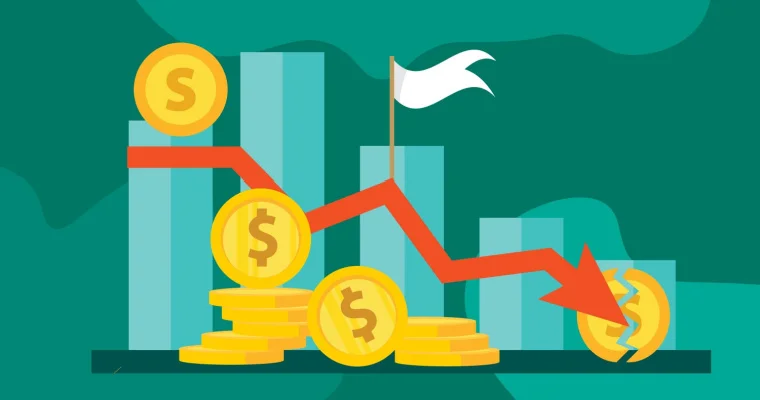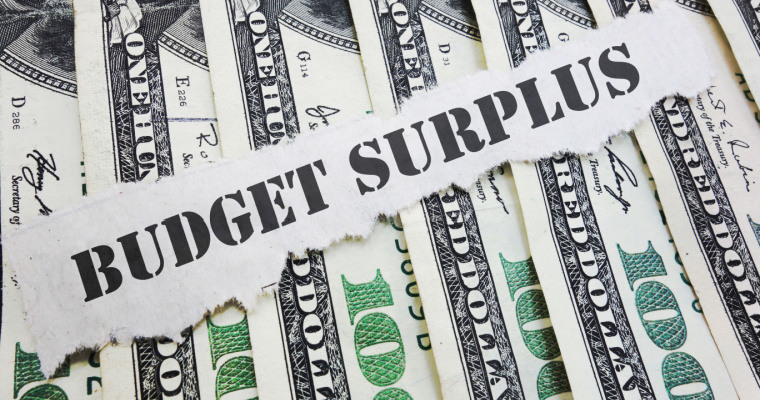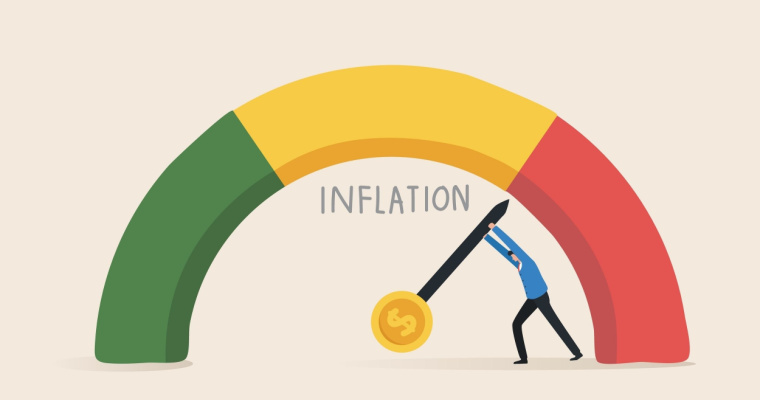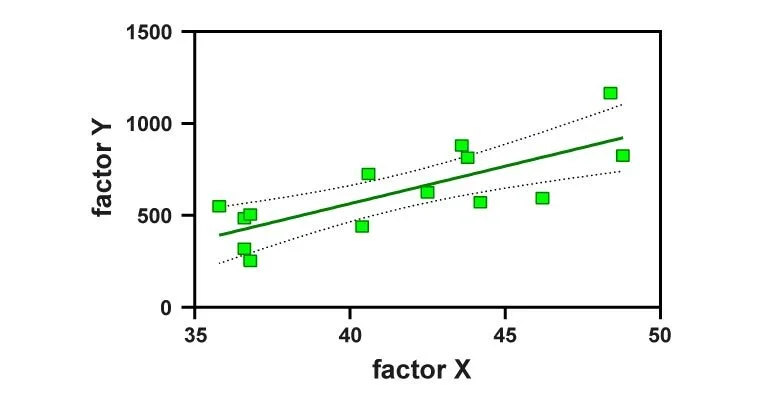A Beginner’s Guide to Elasticity of Demand

Elasticity of demand measures the change in demand when the price or other factors change. It measures the percentage change in demand vis-à-vis a percentage change in any factor that affects demand. The most common example is the change in price. If the price of a good or service changes, the elasticity of demand would measure how the change in price affects the demand for the good or service.
This blog helps you understand the importance of elasticity of demand, its types and their prices, formula, calculation and examples. Read on!
Importance of Elasticity of Demand
The elasticity of demand is important because of the following reasons:
- Helps businesses fix the price of their products
- Helps in maximizing profits
- Helps in pricing a substitute
- Businesses can learn how to allocate the cost of production when they know the price elasticity of demand
What are the Types of Elasticity of Demand?
There are three main types of elasticity of demand. Let’s understand each one in detail –
1. Price Elasticity of Demand
The price elasticity of demand is the most important and common measure of elasticity that is used. The price elasticity of demand measures the change in demand if the price of the product changes.
The price elasticity of demand formula is as follows:
Price elasticity = % change in the quantity demanded / % change in the price
Types of Price Elasticity of Demand
There are five types of price elasticity of demand. They are as follows –
| Types of price elasticity of demand | Meaning |
| Perfectly elastic demand | This is where the elasticity is infinite. This happens when a minimal or negligible change in price brings about an infinite change in the quantity demanded. |
| Perfectly inelastic demand | If the change in price does not affect the quantity demanded, it is called a perfectly inelastic demand. In this case, the elasticity is zero. |
| Unitary elastic demand | Under this case, the elasticity is one. It means that the percentage change in price is exactly equal to the percentage change in the quantity demanded. |
| Relatively elastic demand | When a small change in the price causes a big change in the demand, it is called a relatively elastic demand. The value of elasticity is more than 1 in this case |
| Relatively inelastic demand | When the change in quantity demanded is lesser than the change in price, it is called a relatively inelastic demand. The elasticity is less than 1 in this case. |
Factors Affecting Price Elasticity of Demand
The factors that affect the price elasticity of demand and determine which type of elasticity the product would have, include the following –
- The need of the product
- Substitutes available
- Increase or decrease in the consumer’s income
- The time period over which the elasticity is being measured
- The perishability of the product
- Addiction of consumers
Also Read
2. Income Elasticity of Demand
Income elasticity of demand measures the change in demand when the income of the customer changes. In this category, the price of the product as well as other factors that affect demand remain the same. Only the income changes based on which the change in demand is measured.
The income elasticity of demand formula is as follows:
Income elasticity of demand = % change in quantity demanded / % change in income.
Usually, if income rises, the demand is expected to increase since customers can afford more products at increased income levels.
Types of Income Elasticity of Demand
There are three types of income elasticity of demand. They are as follows:
| Types of income elasticity of demand | Meaning |
| Positive elasticity of demand | This means that the increase in income results in the increase in the quantity demanded. |
| Negative elasticity of demand | This means that the increase in income results in a fall in the quantity demanded. This type of elasticity is usually seen in inferior goods as consumers reduce the consumption of such goods and move to high-quality products. |
| Zero elasticity of demand | This means that a change in income does not cause any change in the quantity demanded. |
Factors Affecting Income Elasticity of Demand
The income elasticity of demand is affected by the following three factors –
- The overall income of consumers in a country.
- The type of product, i.e., whether it is an inferior good, luxury, etc.
- The consumption behaviour or pattern of the customer.
3. Cross Elasticity of Demand
To measure the cross elasticity of demand, two related goods are considered. Then, the percentage change in the first good is measured against the percentage change in the price of the second good. For instance, when measuring the cross elasticity between good A and B, the change in the quantity demanded of good A would be measured against the change in the price of Good B.
The cross price elasticity of demand is measured using the following formula –
Cross price elasticity = % change in quantity demanded of good A / % change in price of good B
Types of Cross Elasticity of Demand
The cross elasticity of demand can also be categorized under the following three types:
| Types of cross elasticity of demand | Meaning |
| Positive elasticity of demand | This means that the increase in price of good A results in the increase in the quantity demanded of good B and vice-versa. This happens when goods are close substitutes. If the price of one rises, consumers switch to the substitute and the demand for the substitute increases. |
| Negative elasticity of demand | This means that the increase in the price of good A results in a fall in the quantity demanded of good B and vice-versa. This happens for complementary goods that are used together. If the price of one rises the demand for the other falls and vice-versa. |
| Zero elasticity of demand | This means that a change in price of Good A does not cause any change in the quantity demanded of good B and vice-versa. This happens in the case of unrelated goods. |
Factors Affecting Cross Elasticity of Demand
The cross elasticity of demand is affected by the nature of the two goods, i.e., whether they are close substitutes, complements or unrelated to one another.
Elastic Demand Formula and Curve
The elasticity of demand can be measured by a simple formula. The formula is as follows:
Elasticity of demand = % change in the quantity demanded / % change in the factors affecting demand
Alternatively, if you expand the formula, the elasticity can be calculated as follows –
Elasticity = (Change in quantity demanded/Original quantity) * 100 / (Change in the factors affecting demand/Original value of the factor) * 100
= (Change in quantity demanded/Original quantity) * (original value of the factor/change in the factor affecting demand)
The elasticity curve can be drawn as follows:
Examples of Elastic Demand With Calculations
Let’s take some examples to understand how to calculate the elasticity of demand –
Example 1
The price of Good A changes from Rs.60 to Rs.75. As a result, the demand for the goods falls from 1000 units to 900 units.
Change in quantity demanded = 100 units
Change in price = Rs.15
In this case, the price elasticity of demand can be measured as follows –
Price elasticity of demand = % change in the quantity demanded / % change in the price of the good
= (Change in quantity demanded / Original quantity) * 100 / (Change in the price / Original price) * 100
= (Change in quantity demanded / Original quantity) * (original price/change in the price)
= (100 / 1000) * (Rs.60/Rs.15)
= 0.4
Since the elasticity is less than 1, it is called relatively inelastic demand.
Example 2
Your income increases from Rs.20,000 per month to Rs.25,000 per month. You start consuming more of Good A and the demand of Good A increases from 100 units to 120 units.
Change in quantity demanded = 20 units
Change in income = Rs.5000
In this case, the income elasticity of demand would be measured as follows –
Income elasticity of demand = % change in the quantity demanded / % change in your income
= (Change in quantity demanded / Original quantity) * 100 / (Change in income / Original income) * 100
= (Change in quantity demanded / Original quantity) * (original income/change in income)
= (20/100) * (Rs.20,000 / Rs.5000)
= 0.8
This would be called a positive elasticity of demand since an increase in income causes an increase in the demand too.
Example 3
The price of tea increases from Rs.500 per kg to Rs.600 per kg. As a result, the demand for coffee jumps from 1000 to 1200.
Change in the price of tea = Rs.100 per kg
Change in the demand for coffee = 200
Cross elasticity of demand = % change in the quantity demanded of coffee / % change in price of tea
= (Change in quantity demanded of coffee / Original quantity of coffee) * 100 / (Change in price of tea / Original price of tea) * 100
= (Change in quantity demanded of coffee / Original quantity of coffee) * (original price of tea / change in price of tea)
= (200/1000) * (500/100)
= 1
This is a positive cross elasticity of demand which means that the increase in the price of one good increases the demand for the other.
Final Word
The elasticity of demand is an important concept when understanding the demand and supply mechanism in the economy. Understand what it is all about, the different types of elasticities and how it is measured. The elasticity would give you an understanding how the quantity demanded changes with respect to other factors affecting demand. If you own a business, you would be able to price your products correctly so that your demand stays up for maximum revenue.
FAQs
Ans: Yes, elasticity can be negative in the case of income elasticity and cross elasticity. In income elasticity, an increase in income reduces the quantity demanded of inferior goods thus giving a negative elasticity. Similarly, in cross elasticity, the increase in price of one good causes a fall in the demand of the other good in the case of complements.
Ans: For essential products, the demand is inelastic because a price rise does not affect the demand too much.
Ans: If the elasticity is 1 or above, it means that the demand is elastic.

Customer’s Feedback
No comments found.What is Primary Deficit? – Example, Formula & Measures
What is a Primary Deficit? Primary Deficit is the difference between the current year’s fiscal... Read More »What is Financial Ratio Analysis? – Objectives, Types and Uses
Ratio analysis is a process that allows people to assess the financial health of a company. Using t... Read More »Treasury Management – Its Functions, Types and Benefits
Even the most well-funded business can run into huge losses if it does not have the resources to fu... Read More »How Anti Money Laundering Combats Financial Crime?
Anti Money Laundering (AML) is a system of rules, laws, regulations, and procedures that financial ... Read More »What is Salvage Value and Why is it Useful?
Salvage value, also called scrap value, is the value of a specific asset after its useful life. In ... Read More »Key Difference Between Factoring and Forfaiting in Trade Finance
Factoring and forfaiting have grown in prominence as major sources of export financing. For the uni... Read More »What is Factoring and its Importance in Financial Management?
Factoring is a practice in which a company buys the accounts receivable of another company at a dis... Read More »What is Budget Surplus: Its Effects, Advantages and Impact with Examples
When the revenue of a government, business, or individual exceeds its expenses in a given period, i... Read More »What is Balanced Budget – Components, Importance and Examples
In financial planning or the budgeting process, a balanced budget is one in which total anticipated... Read More »What Does Inflationary Gap Mean in Macroeconomics?
In macroeconomics, the difference between current and potential GDP is known as a gap. This gap is ... Read More »What is Accounting Conservatism in Finance and How Does it Work?
Accounting conservatism involves a conservative set of accounting guidelines wherein the worst-case... Read More »Multiple Linear Regression (MLP) – Uses, Formula and Examples
Various statistical models help in establishing a relationship between different variables. Multipl... Read More »Top 10 Chit Fund Schemes in India in 2023
Chit funds are one of the most popular return-generating saving schemes in India. It is a financial... Read More »10 Best Gold ETFs in India to Invest in April 2023
Gold ETFs or Gold Exchange Traded Funds are passively managed funds that track the price of physica... Read More »10 Best Demat Accounts in India for Beginners in 2023
Creation of Demat accounts revolutionised the way trades were conducted at the stock exchanges. It... Read More »20 Best Index Funds to Invest in India in April 2023
What is an Index Fund? An index fund is a type of mutual fund or exchange-traded fund (ETF) that... Read More »Best Arbitrage Mutual Funds to Invest in India in April 2023
Arbitrage funds are hybrid mutual fund schemes that aim to make low-risk profits by buying and sell... Read More »10 Best SIP Plans in India to Invest in April 2023
What is SIP? SIP or Systematic Investment Plan is a method of investing a fixed amount in ... Read More »10 Best Corporate Bond Funds in India to Invest in April 2023
Corporate bond funds are debt funds that invest at least 80% of the investment corpus in companies ... Read More »10 Best Bank for Savings Account in India [Highest Interest Rate 2023]
Savings account is a type of financial instrument offered by several banks. It lets you safely depo... Read More »






















